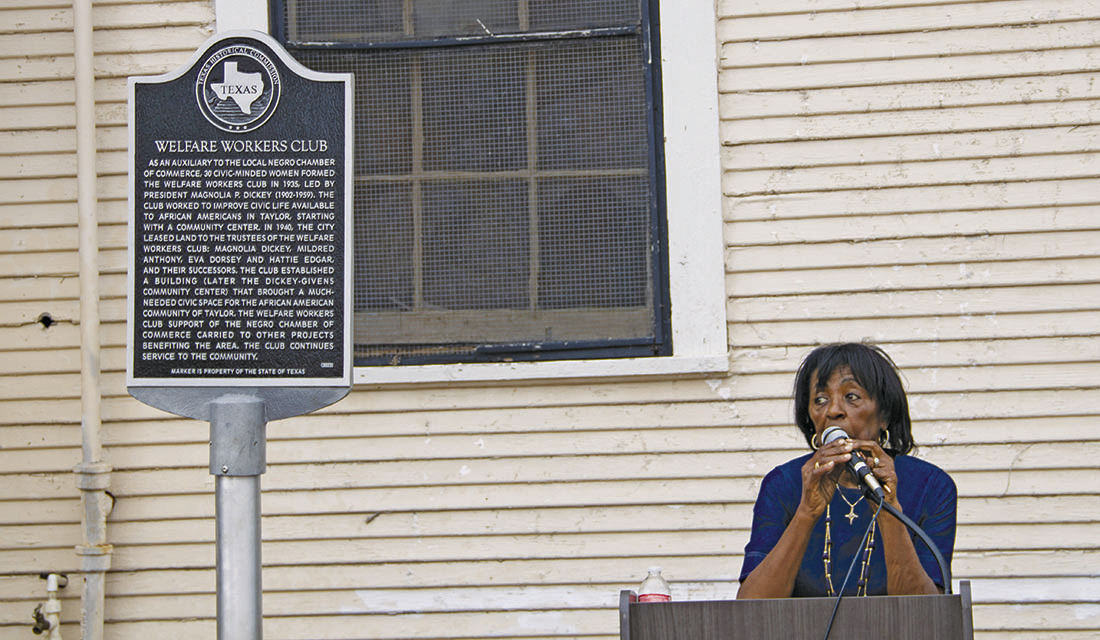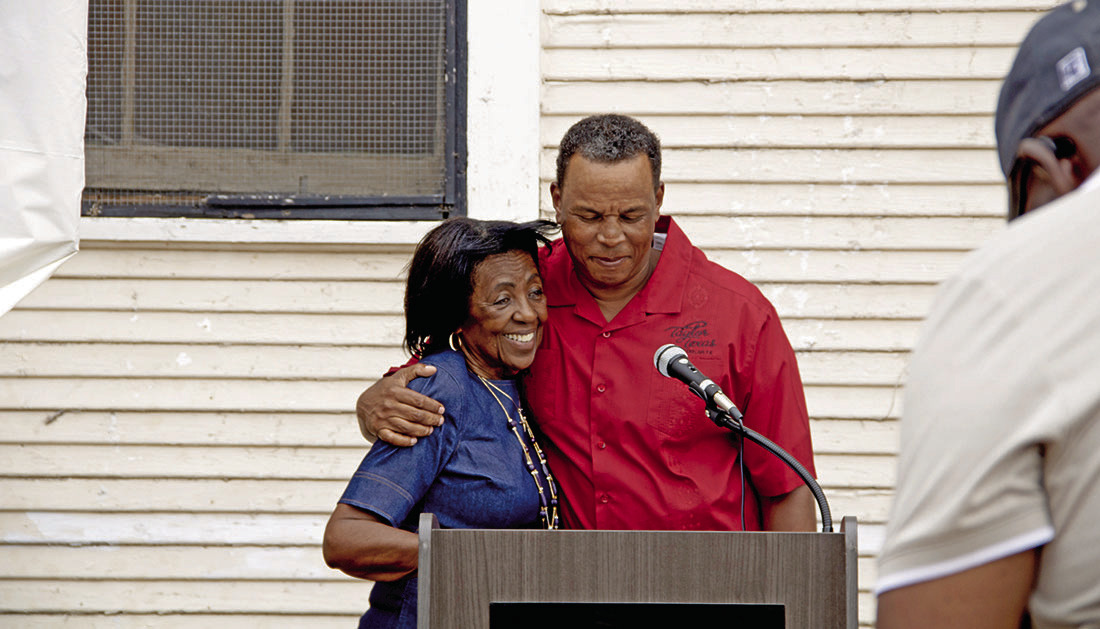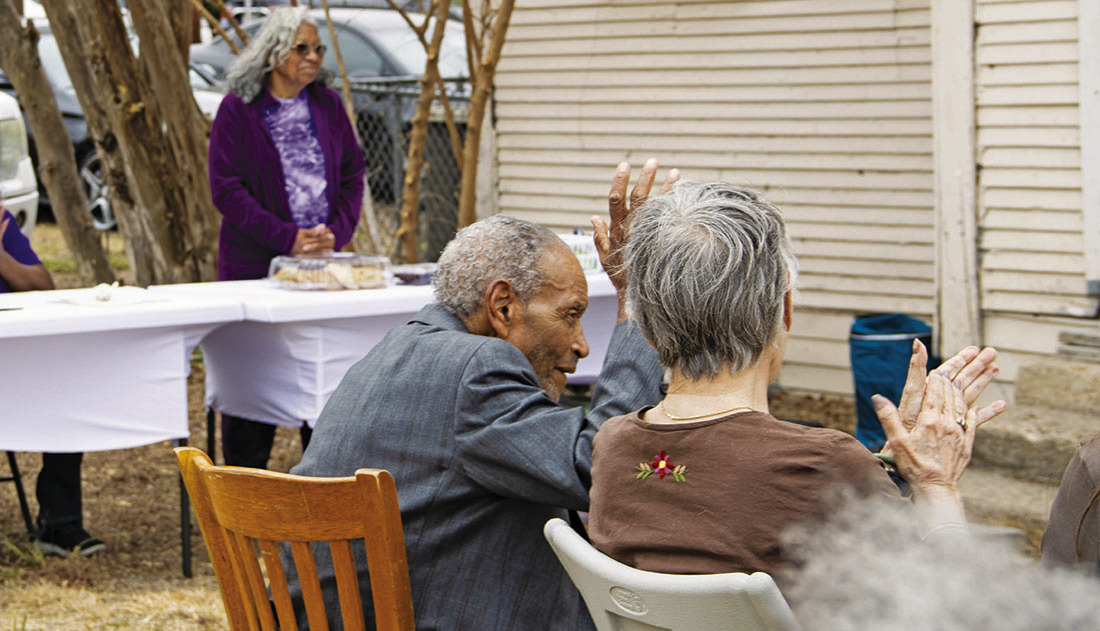The dedication this past weekend of a state historical marker honoring the oldest African American female club in Williamson County could help spur renovation efforts at the old Dickey-Givens Community Center, officials said.
The metal plaque from The Texas Historical Commission lauding Taylor’s Welfare Workers Club took center stage during a ceremony Saturday, Nov. 2, at the center, 903 E. MLK Blvd.
Now that the historical marker is in place, the Welfare Workers Club’s next focus is to revitalize the building.
“Our aim is to see it restored to where it can continue to be used as a multipurpose building here,” said Project Manager Don Hill. “Not only for events, but maybe a place where people can get information for help throughout the community.”
The club, an auxiliary of the Negro Chamber of Commerce formed in 1935 “by 30 civic-minded women” according to the marker, established the community center just five years later under President Magnolia Dickey to improve civic life for African Americans in Taylor.
“The club always took an interest in all matters affecting the welfare of Negroes in Taylor,” President Leslie Hill said at the ceremony. “This was one of the pressing problems of our community — Negroes had no place for public gatherings, and young people had no place to go together for recreation.” District 1 Councilman Gerald Anderson shared memories of growing up in Taylor’s Black community, saying the facility has served its purpose well.
Before leading the crowd in prayer, the Rev. Daniel Alderete of Jerusalem Pentecostal Church shared his own memories about the center’s namesakes and of his wedding reception held there 45 years ago.
In 2016, the center was named after pioneering Black physician James L. Dickey — the husband of Magnolia Dickey — and teacher Lessie Givens, both of whom served many families in the region, officials said.
“Things have come and gone (in the community), but there’s been one constant that’s always been there, and that’s the Dickey-Givens Community Center — for us to celebrate, reminisce, just have a place to go to,” Anderson said.
Taylor resident Ernest Rector, 96, whose family is credited with playing a major part in African American families moving to the city, also attended the dedication.
“Ninety-six years old, y’all. What a testament to the great people that we have here in Taylor,” Taylor Independent School District Superintendent Jennifer Garcia-Edwardsen said of Rector. “I’m just blessed to be able to be here this morning with all of you and learn so much.”
The dedication of the marker had its genesis in an effort by former Mayor Don Hill to seek funding in 2013 to renovate the center.
After pursuing opportunities through the city of Taylor and federal grant programs, Hill couldn’t get the money to put toward renovation, officials said. Then, a colleague suggested getting a historical marker for the building might help his chances.
So in 2023, Hill — with the help of Williamson County Historical Chairman Mickie Ross and state Rep. Caroline Harris Davila — put in an application, which was approved within a month.
“It’s an honor to recognize this building, but more than that, to recognize the people behind it — the people that gave their heart and soul to making Taylor what it is,” Harris Davila said.
Ross recounted that upon receiving a call from Hill, she was determined to make the marker unique by writing the narrative featured on it herself, which she had never done before.
“I want to thank you guys for all your hard work for many years,” Ross said to the Welfare Workers Club. “Preserving this part of our heritage — something that is so woven into the fabric of this community — just makes a huge difference, not only in Taylor … but for the whole state of Texas.”








